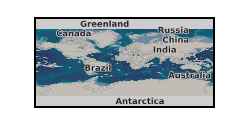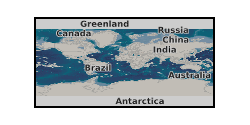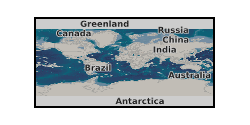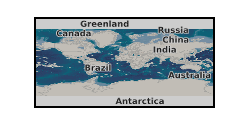Fluid flow
Type of resources
Topics
Keywords
Contact for the resource
Provided by
Years
Formats
Representation types
Update frequencies
-

This dataset is used and fully described/interpreted in the paper: Passelegue, F. X., N. Brantut, T. M. Mitchell, Fault reactivation by fluid injection: Controls from stress state and injection rate, submitted to Geophys. Res. Lett. Text files contain raw and processed data. Mechanical data are raw. Load needs to corrected (offset) from piston friction, measured at the beginning of each run before the hit point. Axial displacement is converted into sample shortening by correcting the load from machine stiffness, which is equal to 480 kN/mm (calibrated on Mon. 14 Mar. 2016). Data include a set of elastic wave first arrival times, obtained from time of flight measurements using an array of piezoelectric transducers and the cross-correlation method detailed in Brantut (2015) (see reference above). Two separate files correspond to mechanical data from experiments conducted at 50 and 100 MPa confining pressure (""mech_Pc=???MPa.txt""). One file (""sensors.txt"") contains the initial positions of each piezoelectric transducer. Files named ""wave_?_Pc=100MPa.txt"" (?=1,2,3 or 4) contain time series of arrival times during the four injections conducted at Pc=100MPa. Each column consists in the time-of-flight between a given pair of sensors (x->y, where x is the index of source sensor, and y is the index of the receiver sensor, as per their numbering in the ""sensors.txt"" file.) In all the data files, the first column corresponds to a common time basis, in seconds.
-

Two published papers: Modelling the Lost City Hydrothermal Field: Influence of topography and Permeability structure. https://doi.org/10.1111/gfl.12151: and Rapid generation of reaction permeability in the roots of black smoker systems, Troodos ophiolite Cyprus. https://doi.org/10.1111/gfl.12117
-

A pore-scale experimental investigation of microscopic steady-state flow during co-injection from very low to high flow rates in the pore space of a sandstone is applied using 4D synchrotron X-ray micro-tomography to advance our understanding of flow regimes. We report the results of micro-CT imaging experiments directly visualizing the simultaneous flow of both a wetting and a non-wetting fluid through a Bentheimer sandstone, at pore-scale resolution. For small flow rates, both fluids flow through unchanging, distinct, bicontinuous 3D pathways. At higher flow rates, however, the non-wetting fluid continually breaks up into discrete ganglia; these are then advected through the medium. We propose that the non-wetting fluid breaks up when the sum of the viscous forces exerted by the wetting and the non-wetting fluids exceed the capillary forces at the pore scale.
-
Fluid flow in the Earth: the influence of dehydration reactions and stress (NERC grant NE/J008303/1)

Text files of physical parameters controlled or measured in rock heating and deformation experiments; jpg and tif files of optical and electron microscope images of experimental products; xome xlsx spreadsheets related to data interpretation.
-

UKGEOS and Core Sample Analysis. Geomechanical testing was performed to determine triaxial compressional strength, tensile strength, frictional strength and permeability of sandstones, siltstones, mudstones and coals from eleven depth intervals within the GGC01 borehole, UK Geoenergy Observatories (UKGEOS), Glasgow, United Kingdom. Frictional strength tests were also performed on cuttings samples of sandstones, siltstones, mudstones and coals from the GGA08 borehole, Glasgow, United Kingdom. In total twenty-three tensile strength tests were performed on ten sampled intervals, and seven porosity measurements pre-and post-failure were taken. Nine triaxial compressive strength tests and twenty-one frictional strength tests were performed, with permeability measured both before and after failure or shear respectively. From compressive strength tests we also determined the Young’s modulus and Poisson’s ratio. Results of X-Ray Diffraction are also included in the dataset.
 NERC Data Catalogue Service
NERC Data Catalogue Service